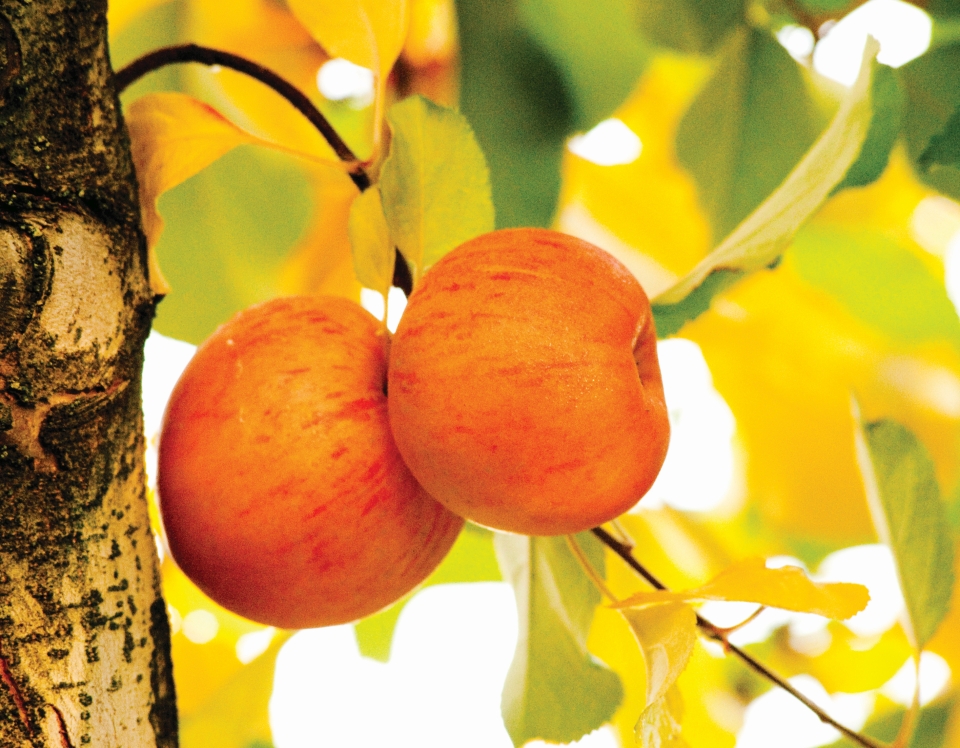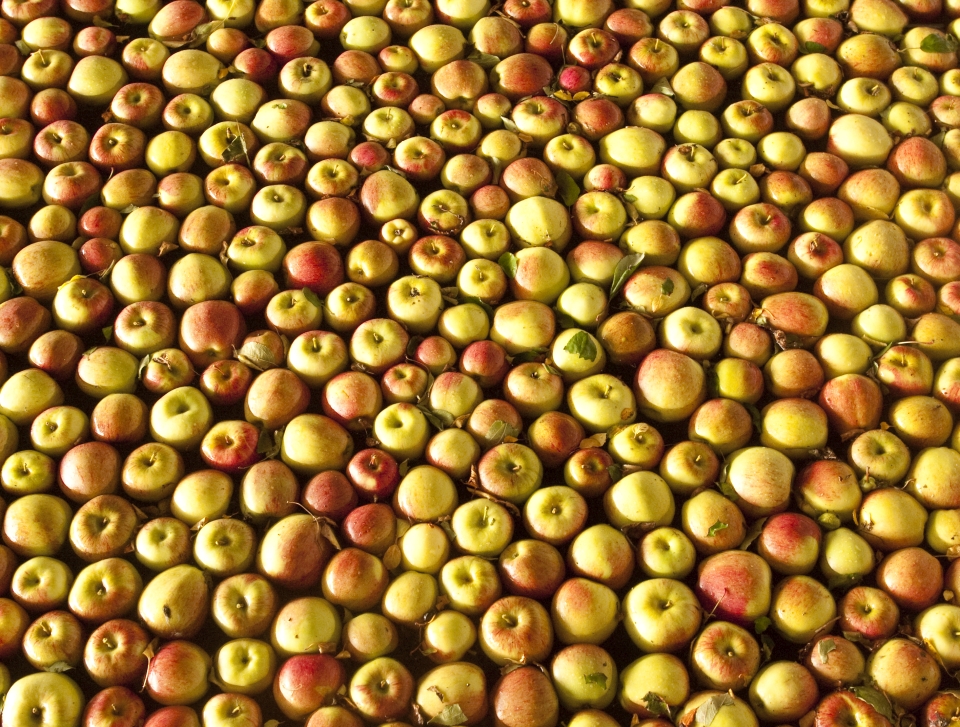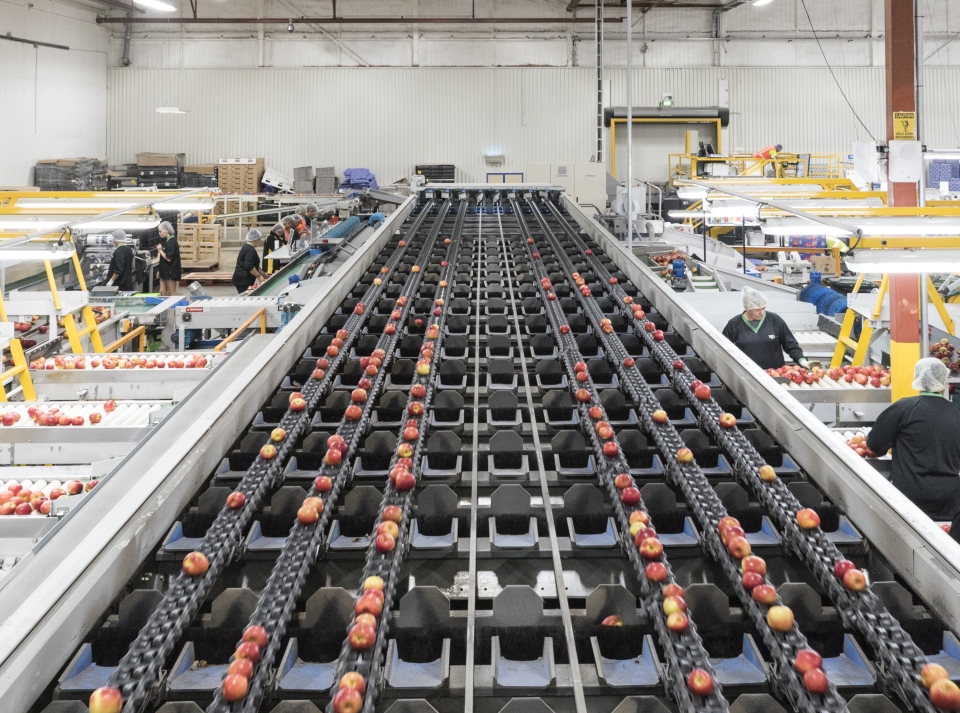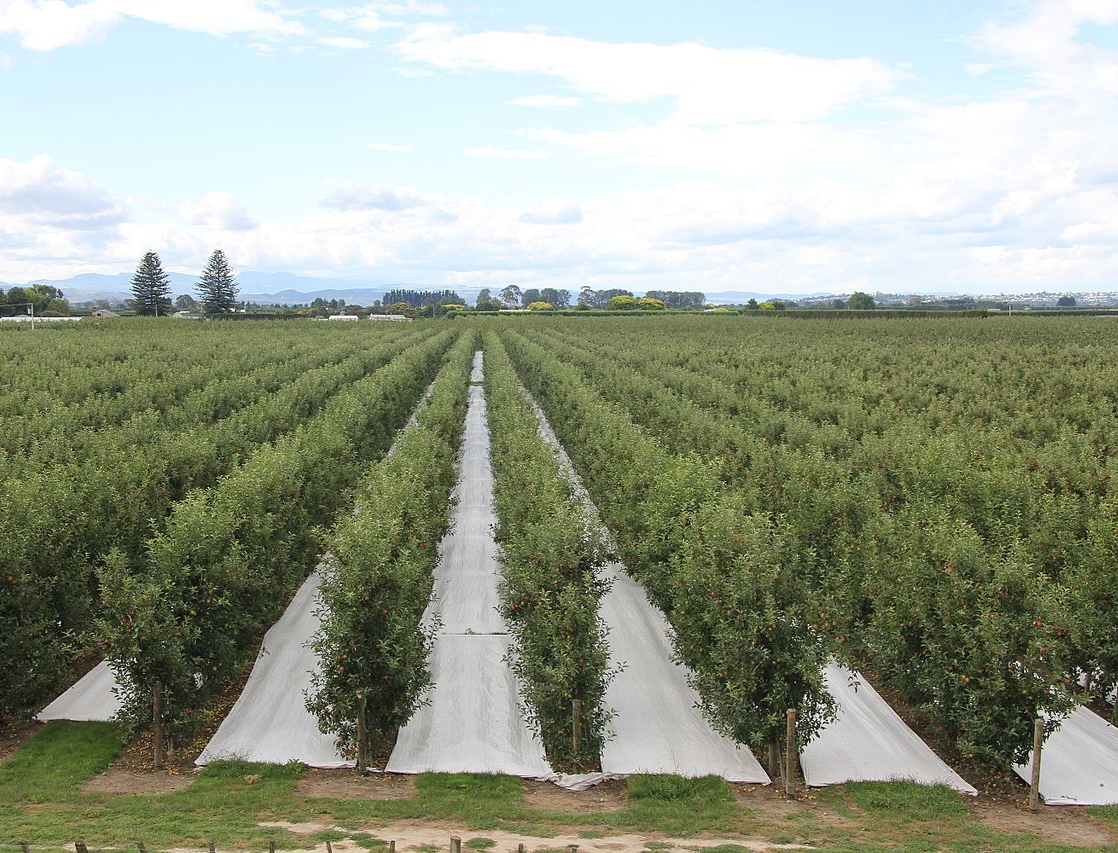The main challenges that horticulture and the apple industry face come from:
- Biosecurity – new pests and diseases arriving from overseas
- Climate change
- Less land available for growing apples
- Competition for resources such as water
- Changing demands from consumers.
Apple pests and diseases
Insect pests can damage apples, making the fruit unsuitable for export.
Leafrollers
Six species of leafroller are serious horticultural pests. Four are endemic. The other two are from Australia. The apple moth also damages the leaves and fruit of berry plants and grapevines.
Codling moth
Major pests of apples are caterpillars of the codling moth, originally from Europe. Mature caterpillars are about 20 millimetres long, and pinkish-white with a brown head. Adult moths are small. Codling moth larvae scar the outside of fruit. The damage caused by older larvae, which enter the fruit and feed on the core, is severe. If there are live codling moth caterpillars in apples exported to overseas countries such as Taiwan and China this can close the market. Other pests include scale insects and woolly apple aphids.
Climate Change
A changing climate will affect future apple production. Climate change will lead to changes in:
- average temperatures
- extreme temperatures
- the timing and amount of rainfall
- the levels of atmospheric greenhouse gases
- number of frosts.
Climate change may allow more fruit to grow but there will be more pressure from pests and disease. Maintaining biosecurity will be increasingly important. With less reliable rainfall orchards will rely on irrigation. More extreme weather events such as high temperatures and increased storm damage will also pose a risk to production.
Land use
With more people living in New Zealand there will be more pressure on horticulture. We will not only need to grow more food, but we need to have land to grow this food. As cities grow and spread out there is less land available for growing this food. Careful planning is needed to ensure areas with high quality soils are used for growing food rather than housing.
Resources
Water is a precious resource. The demand for water is growing so people and industry will need to manage their use of water carefully. In the future we will need to store more water so there is still water available in times of drought.
Consumers 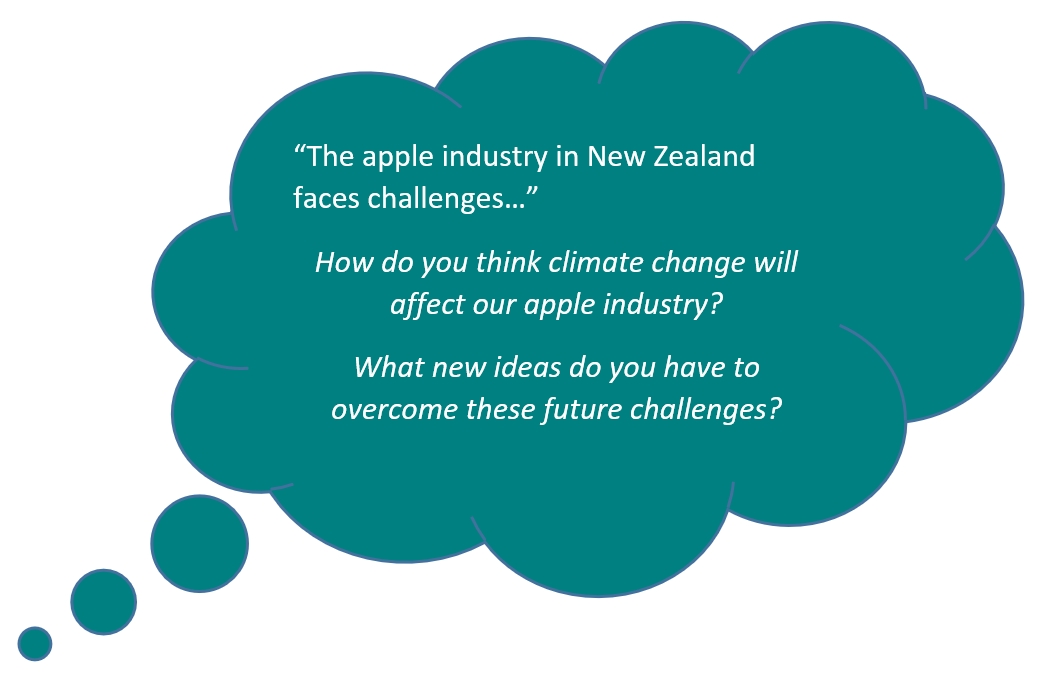
Consumers around the world have changing lifestyles and want new products. For example, they want healthier meals that are quick to prepare. Consumers expect to buy fresh produce year-round. The apple industry will need to adapt to what people want to buy and develop new apple varieties. Consumers also expect their apples to be grown in an environmentally friendly way with less chemicals.
Research and the development of new technology will help New Zealand to meet these challenges.
Ready for a quiz? Try the "Challenges for the Apple Industry" interactive activity.

